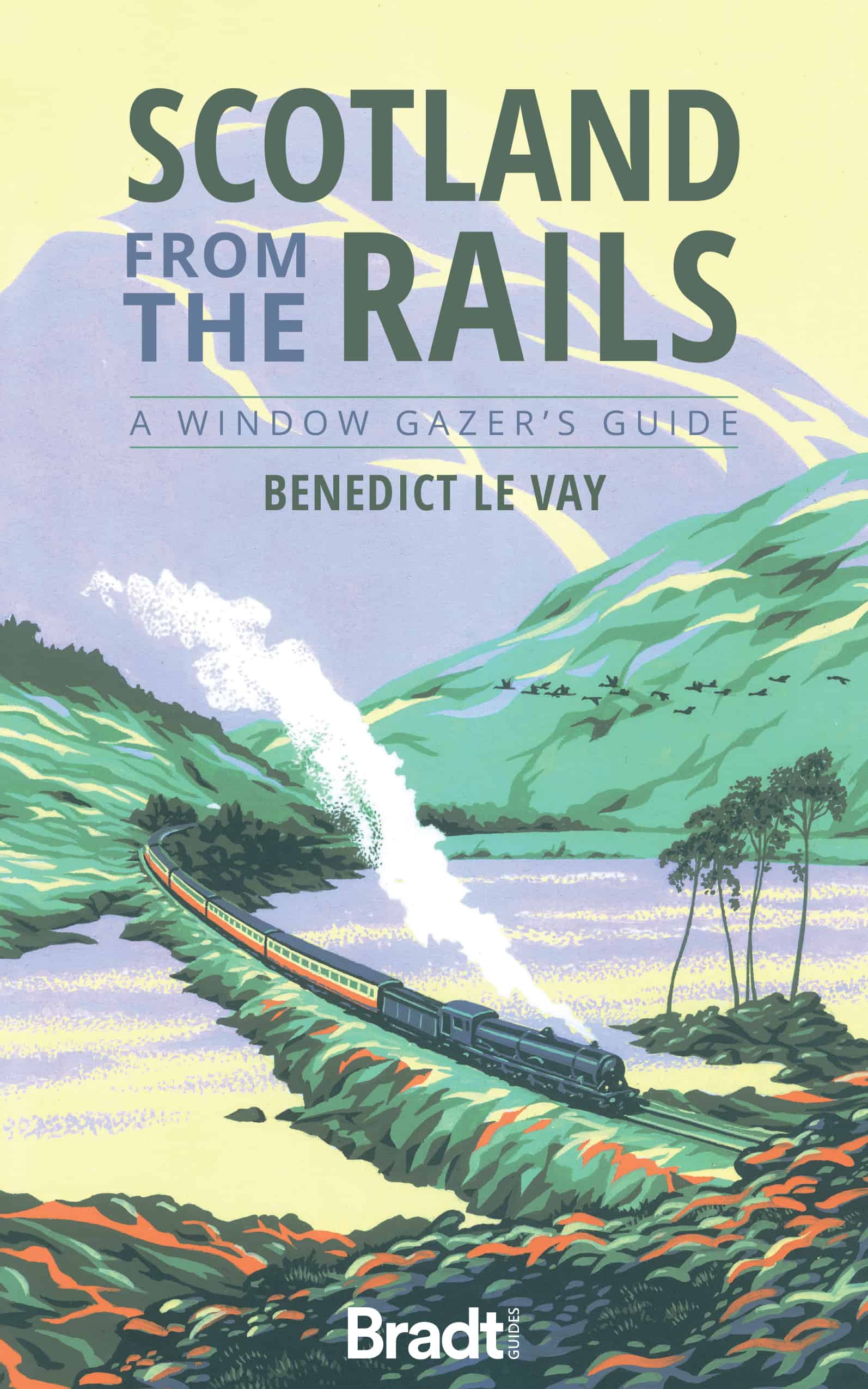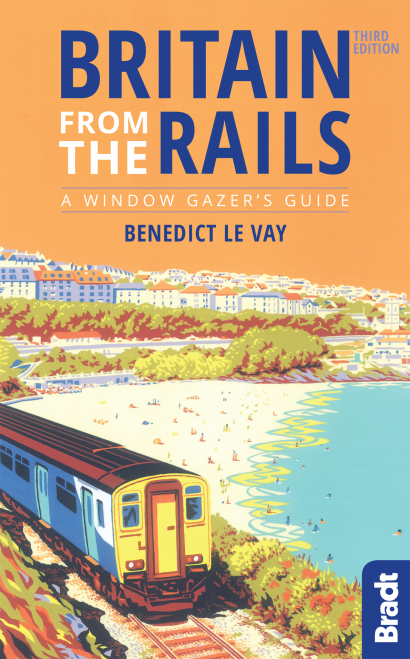It’s blooming brilliant news that a new budget train operator, Lumo, will soon offer services up and down the East Coast Main Line between London and Edinburgh at a much lower cost and lower carbon footprint than most trains, already the greenest method of travel.
Due to begin in late October, the new service will have a limited calling pattern, which to be frank may be partly about not abstracting too much ticket revenue from the other operators such as LNER, but does give the benefit of fast journey times (about 4½ hours end to end, which beats car hollow and air too if you factor in getting to airports, etc).
And if you want to travel to/from London King’s Cross, Stevenage (great for M25 but few services to start with), Newcastle, Morpeth and Edinburgh Waverley, then splendid! If you want to go to Peterborough, Doncaster and York though – well tough cheddar. There are plenty of other operators, including some independent – isn’t this how rail privatisation was supposed to work, and doesn’t mostly?
While some of the company’s claims might hint at trendy ‘greenwash’ – do we really care much of the guard’s uniform will be recycled in ten years’ time, given the greater threats to the planet? – this service, using new all-electric lightweight trains made in Britain, will certainly be very low carbon, particularly if the electricity comes from windmills or solar panels – or even the train on the other tracks, using regenerative brakes.
The best thing is that this is a bargain way – at under £20 to start with – to enjoy Britain’s greatest main line and to reach to the finest city in Scotland from the greatest city in Europe. So what are we to expect along the way?
King’s Cross
What a brilliant reconstruction of King’s Cross was completed in 2014. Look at the way the ingenious and magnificent roof arches across what was wasted space between the terminus and the old Great Northern Hotel – it’s like being inside a giant fountain! It replaces the shabby cabins that messed up the frontage for decades and caused overcrowding. And what a wonderful contrast the simple, ascetic 1852 building designed by Lewis Cubitt makes, with the Gothic madness of St Pancras next door, also brilliantly restored.
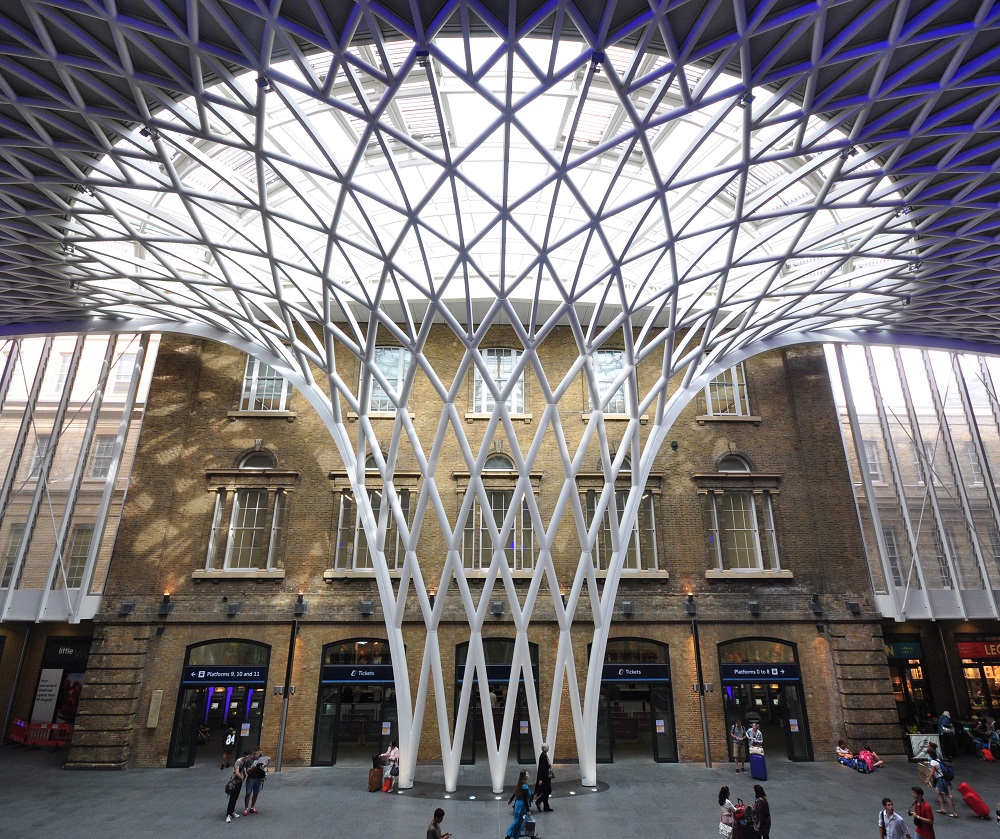
If you’re a Harry Potter fan – and half the world is – then first pop across to under the footbridge in the departure concourse near to the suburban platforms to not see Platform 9¾, or at least see its sign, where potty Potter people pose with a trolley halfway through the wall. The platform itself is invisible, but you would want the Hogwarts Express to Hogsmeade if you do get through the wall. If you’re not a fan, you’ll think I’m bonkers, so don’t bother. King’s Cross station also appears in dozens of books and films ranging from The Ladykillers to Sherlock Holmes, and is on the site of Queen Boadicea’s grave, says the legend.
After Peterborough
We start climbing Stoke Bank, a long, gentle and straight slope, ideal for racing downhill towards London, which became the site of a historic moment on 3 July 1938. In conditions of severe secrecy – in case the rival West Coast company LMS tried to steal a march by grabbing the place in the record books – driver Joseph Duddington, a man known to take calculated risks, crested Stoke Summit at the north of the bank at a creditable 75mph, coming towards London.
He was driving the LNER’s streamlined Mallard, a name engraved on the hearts of railwaymen around the world. The A4-class loco was pulling a carriage with special measuring equipment – a dynamometer car – and although the track was officially passed for only 90mph, he was encouraged to give the Gresley-designed loco her head down the gentle slope. The speed crept up and up and eventually reached 126mph, a world steam record which surely will never be broken.
Now 4468 Mallard is exhibited in pride of place at the National Railway Museum, further along this route at York, but here’s a thought: this amazing speed – which severely overheated the mechanical parts so she had to be towed for repair and had the press celebrating the driver as a hero – is pretty well matched by trains on this route every day.
Mileposts and white horses
Not long after York, and despite a curious old Zero milepost on Platform 4 at that station, you can soon see the restored original LNER sign on the right saying ‘Edinburgh 200 miles’; it is followed not long afterwards by one saying, ‘Edinburgh London halfway’ and a bit further by one saying ‘London 200 miles’. In fact, it is 393 miles by rail from King’s Cross to Edinburgh Waverley, so if they’d made the route a few miles longer they could have had one sign not three!
Also, high up on the right, is a white horse carved into a hill, one of perhaps a dozen around Britain, some prehistoric. Consider the geography for a minute: we are racing north up the flat lands of the Vale of York. The White Horse is carved on the shoulder of the beautiful North York Moors (right), a set of hills that march east for not many miles to the North Sea at Whitby. Looking left (west) you can see the Pennine Hills, the backbone of England, with distant escarpments visible from the train, with the lovely Yorkshire Dales being those river valleys coming out of the hills – Wensleydale being the most obvious and cheesiest.
So we are racing up a gap only about 20 miles wide to reach the Scottish border. The West Coast Main Line races north on the other side of the Pennines, almost touching the Irish Sea at Lancaster, but then hits the Cumbrian Hills at the Lake District and has a hefty climb to Shap. We, on the ECML, are on much the better route. Only a madman would go up the middle along the Pennines – which is precisely what the Midland Railway did, beaten to the easier east and west coast routes, with its insanely ambitious Settle & Carlisle route in the hills to our left.
Northeast legends
We cross one of Newcastle’s spectacular bridges over the Tyne but beyond there are even more rivers, and viaducts to cross them. One of the prettiest is reached at Alnmouth; the town is seen to the right by the river mouth. Local enthusiasts are rebuilding the short branch to Alnwick as far as they can. Alnwick Castle is home to the Dukes of Northumberland – and here – a link with King’s Cross –14 flying Ford Anglias were crashed during the making of Harry Potter and the Chamber of Secrets, for the castle becomes Hogwarts in the movie. Or so I was told locally, perhaps by leg-pullers – weren’t they computer generated?
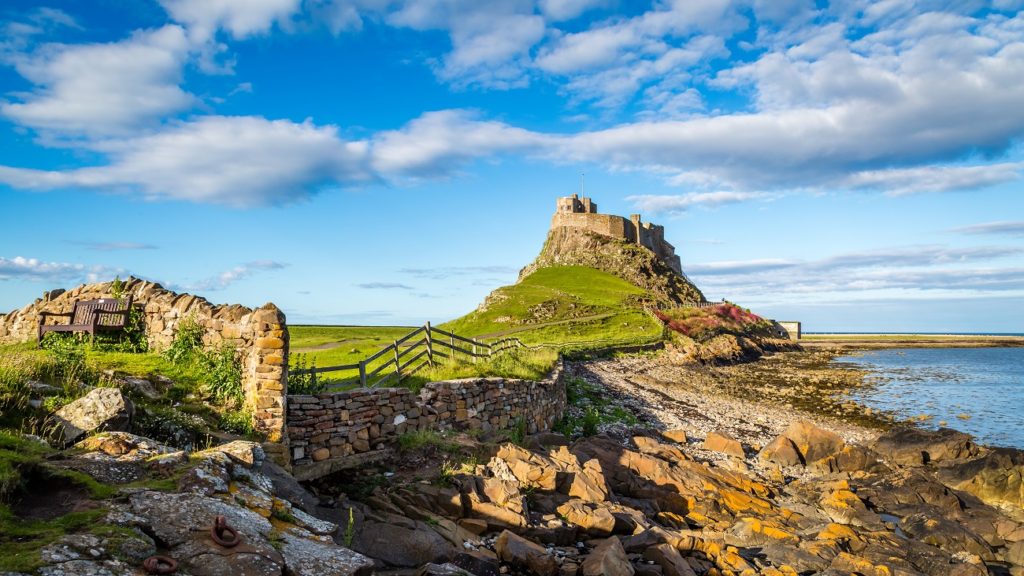
Now concentrate on the views to the right. Here you can see the fabulous ‘Holy Island’ of Lindisfarne, cradle of English Christianity, and linked to the mainland by a tidal causeway, obviously visible more clearly at low tide with its refuge tower. At the island’s south end (right, looking across) there is a village, a castle on its low, grassy mound, and several homes made from upturned, tarred-black boats with chimneys and windows cut in their hulls (like those described in Charles Dickens’s David Copperfield). The rather sinister-looking pair of obelisks on the right are leading marks, directing boats for the best channel to approach from the sea. Further to the right (south of Lindisfarne) is the stunningly located Bamburgh Castle. The railway viewpoint just couldn’t be better.
The Lindisfarne causeway is cut off for around four hours around each high tide. It causes no end of fun with stuck camper vans, strange effects on the tide coming down from the north, and formerly strange effects on the opening hours in the island’s pubs. How was the local cop going to get across once the tide was up? Soon another real treat comes up, with Berwick-upon-Tweed. Look out for the Tweedmouth Lighthouse. Passing that small town, which is across the river from Berwick, look ahead for a fine view of the Royal Border Bridge.
In fact three bridges cross this handsome river, which traverses much of the Scottish Borders (and indeed is the border for most of its course). There’s the magnificent railway bridge we are purring across (the Royal Border Bridge, 28 arches, built by Robert Stephenson, son of George,), the modern road bridge and a more ancient bridge below. Before that was built, there were ferries. Berwick has famously changed hands a few times. It once came to be at war with Russia for more than a century by accident, with the Soviet Union sending an ambassador to sue for peace between Berwick and Moscow. It’s decidedly English now, and after the station you get a glimpse of the massive fortifications necessary to stop the kilted chaps grabbing it back. Just after that, you cross the border.
It’s Firth, Forth, Fife!
Just after milepost 43 (they are now counting from Edinburgh not King’s Cross), you see another one of those huge old signs, this one saying ‘London 350 miles’. We get our first glimpse of the Fife coast to the north, looking way across the Firth of Forth. Just after milepost 29 we whizz through Dunbar; look out for a superb view of the island of Bass Rock, and flat Fidra beyond. On the right, what looks like a mine slag heap in its conical shape is Berwick Law, a volcanic ‘crag and tail’ left scraped clean by glaciers after the last ice age. You can spot others in the landscape, particularly at journey’s end the one Edinburgh Castle sits on.
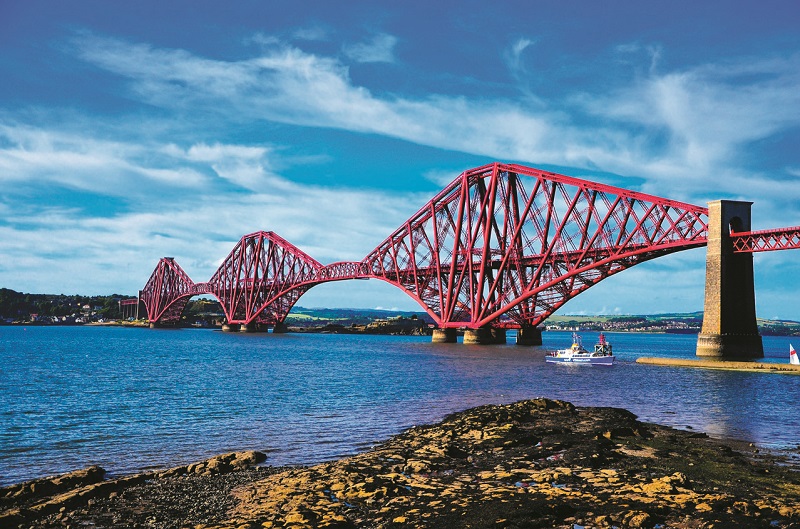
Soon we can see the hills of Fife across the Forth more clearly, and exciting occasional glimpses of Edinburgh Castle and Arthur’s Seat (Edinburgh’s highest hill) ahead, as well as glimpses of the Forth Bridge beyond. As we whistle through Prestonpans, Wallyford and Musselburgh we can soon see Calton Hill, through which our train will tunnel. It is covered with fascinating monuments and absolutely worth the climb from the station for the best view of Edinburgh.
I can’t here detail everything that’s great about Edinburgh, but as you reach Waverley station, the Old Town and castle are high on the left, and Princes Street, the New Town and the Scott Monument are high on the right. If you are a first-timer, you have a treat in store! If you are a repeat visitor, you’ll already love the place.
And then what? Three top rail days out from Edinburgh
North Berwick: for quality street and black magic
A day out to North Berwick from Edinburgh is fun and quick, being less than 40 miles along the coast to the east. It is connected by a fast, clean, reliable, direct train (33 minutes) which takes a four-mile branch off the East Coast Main Line on its way south to the other better-known Berwick. It goes from Haymarket or Waverley stations. Someone once ludicrously titled North Berwick ‘the Biarritz of the North’. One wonders if they had seen either of them.
But it’s guaranteed to be worthwhile on any half-decent day because of the superb location – wide clean sandy beaches, rock pooling or scrambling around rocks, plentiful seabirds – and the best view you can imagine. Plus yarns about witchcraft, whales and war. Find out about the meaning of Quality Street – clue: it’s about being toffee-nosed.
Bordering on the brilliant
One of the many things to love about Scotland – besides the sensational scenery, wonderful whisky and the supposed tendency to deep-fry anything that stands still for a moment – is their staunch belief in railways. Somehow they fought off many proposed Beeching cuts in the 1960s that suggested, for example, uneconomic lines north of Inverness be closed (which meant all of them). Had they been in England or Wales, they surely would have been. One route that was in fact closed in that infamous era, the Waverley Line through the Borders, has been brilliantly brought back to life as the Borders Railway.
The new name better reflects what it now does, and the nation isn’t as obsessed with Sir Walter Scott’s novels, the source of the original name, as it once was. Nevertheless, it runs from Edinburgh’s station named after his novel Waverley – next to the magnificent Scott Monument on Princes Street – to the literary giant’s glorious home Abbotsford on the banks of the Tweed. You can’t get more Scott-ish than that!
The rebuilt line was opened by HM the Queen, no less, riding the Royal Train behind an A4 steam loco (the same class as glorious world-record holder Mallard) on, fortuitously, the exact day when HM became Britain’s longest reigning monarch: 9 September 2015. Both the monarch and the Scottish owned loco, Union of South Africa, were looking pretty darn good for their age (89 and 78 respectively), and the crowds flocked to see two legendary old ladies who had not run out of puff. They also flocked shortly afterwards to ride the new line, not surprisingly, given that level of publicity, so the usage exceeded targets – a million passengers in the first year instead of the envisaged 650,000. It’ll surely be extended further south soon
Go Forth!
You simply must traverse the iconic Forth Bridge, star of many a film such as The 39 Steps, on a train. You can do this cheaply by taking a Fire Circle train which also tours some inland towns and seaside spots in that county before heading back to Edinburgh, or if you travel up to Dundee, you get to also cross Britain’s longest railway bridge, over the Tay.
Going west, not north, there are no fewer than five electrified routes to Glasgow, and a good excursion is to Linlithgow, for the ruined Palace, birthplace of Mary, Queen of Scots.
For more from Ben on the delights of Britain’s railways, take a look at his two fantastic books: Britain from the Rails and Scotland from the Rails.
